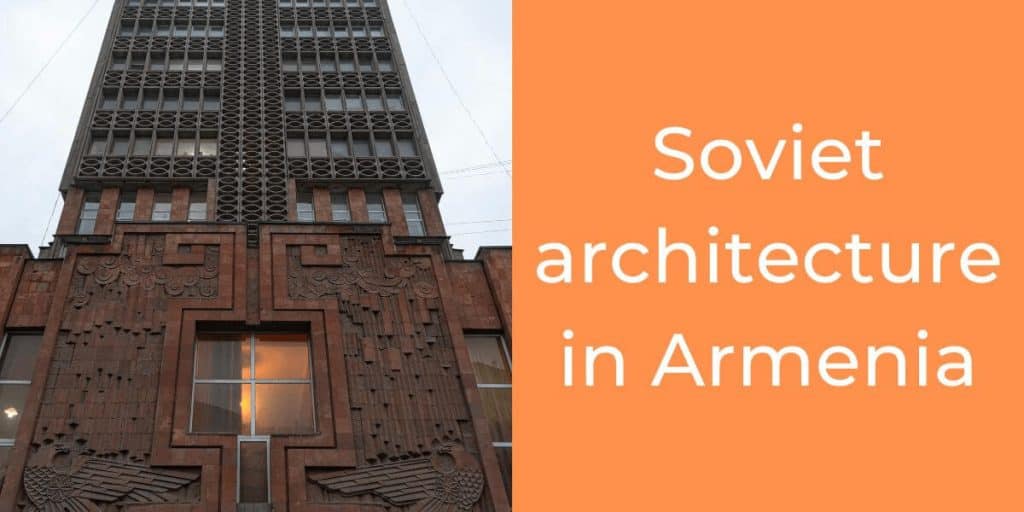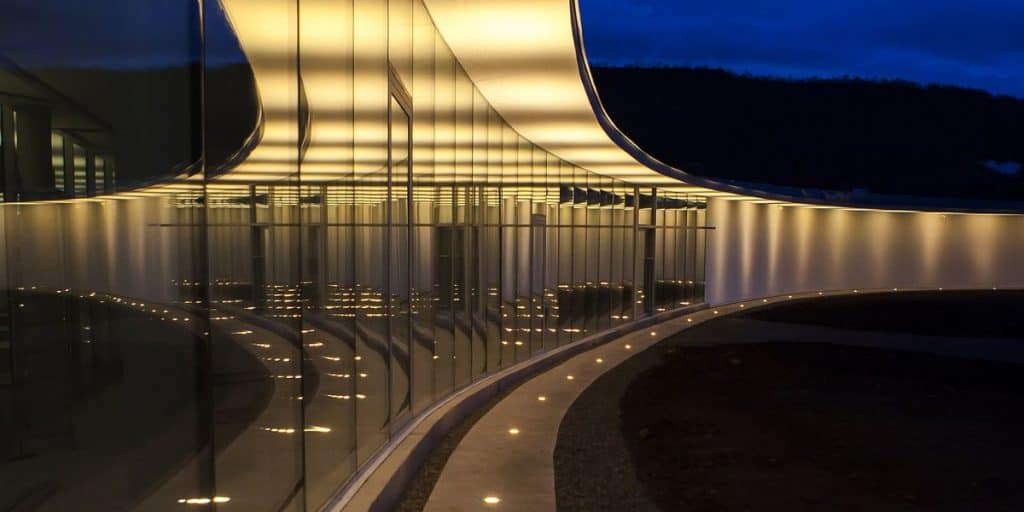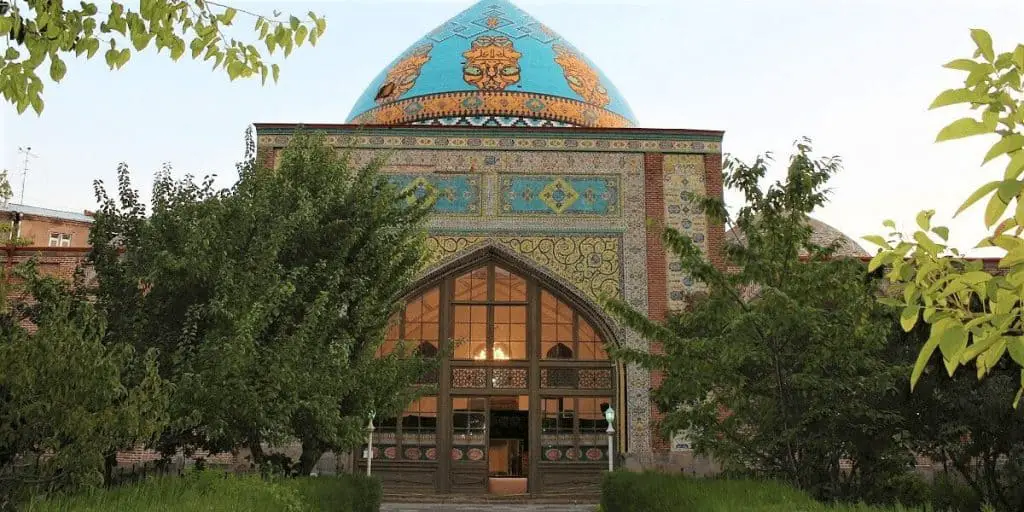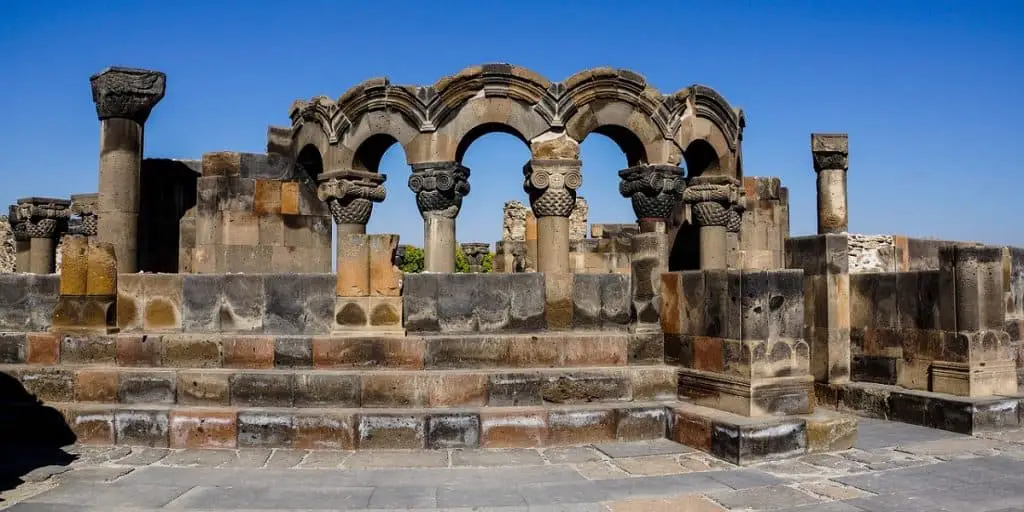The historic land of Armenia holds a unique architectural legacy that reflects its complex past. Alongside ancient churches and temples, Armenian architecture is significantly affected by the period of Soviet rule, which left an indelible mark on the country’s urban landscape. Today, as Armenia builds its future, preserving the architectural heritage while embracing contemporary trends is a special challenge. So, let’s have a look at some of the most interesting examples of Soviet architecture in Armenia.
Soviet architecture in Armenia is characterized by mass housing projects and urbanization reflecting a drive for utilitarianism, functionalism, and standardization. The monumental buildings, housing complexes, and urban planning projects still shape the country’s urban landscape and cultural identity.
If you want to add something, don’t hesitate to ping me on Twitter or Instagram with #ArmeniaTravelTips.

A brief history of Soviet rule in Armenia
Armenia joined the Soviet Union in 1920 after the Sovietization of a short-lived independent Republic of Armenia. From the start of being subject to Soviet rule to the collapse of the regime in 1991, Armenia experienced both moments of progress and an enduring struggle for independence. Despite the Soviet shortcomings in terms of rights and freedoms, the Soviet Union granted people living in Armenia at that moment a chance for economic development and cultural transformation.
The territories of modern-day Armenia have historically been rather in the peripheries of the Armenian world. Therefore in this area, you can hardly find large and thriving historical cities with developed infrastructure and bustling cultural scenes. By the time the Soviets took this land over, Armenians were already expelled from many of their historic cities and towns in Eastern Anatolia (modern-day Turkey). So, when many of these fleeing Armenians arrived in what’s today known as the Republic of Armenia, they found underdeveloped, mostly rural or semi-rural settings. The Soviets then had a lot of room for building something much more industrial and modern out of that.
One of the immediate effects of Soviet rule was the implementation of collectivization and industrialization. Small farms were transferred into collective farms (kolkhozes). Despite causing resistance among the rural population, this enabled a wave of urbanization. Thanks to these changes Armenia enjoyed some economic growth. Industrialization brought factories and infrastructure to Armenia, boosting urbanization and changes in the labor force even further. Cities like Yerevan, Gyumri, and Vanadzor (Leninakan back then) started growing at a fast pace. That is why so much of the architecture that we see in those cities today comes from that era.

Characteristics of Soviet Architecture in Armenia
In the course of 7 decades, Armenia experienced immense urban transformation. The Soviet architectural styles left a sharp mark on the country’s urban landscape. As a result, our cities were marked by blending utilitarian design with grandiose structures.
Utilitarianism was one of the characteristic traits of Soviet architecture. Buildings were designed for practical purposes and priority was given to efficient use of space and resources. As a result, the architecture consisted of mainly blocky structures with minimal embellishments.
Another defining feature of Soviet architecture was its tendency to monumentalism. They say “The Russian elephant must be the biggest elephant” right? That’s what was happening here. Often large-scale structures with imposing facades were built to dominate the surrounding area.
Today, we can say that at times it feels intimidating when you pass by such a building. But I’m quite convinced it’s not a bug, but a feature of Soviet architecture. People were meant to “feel small and insignificant”, always reminded of the “big brother” observing them.
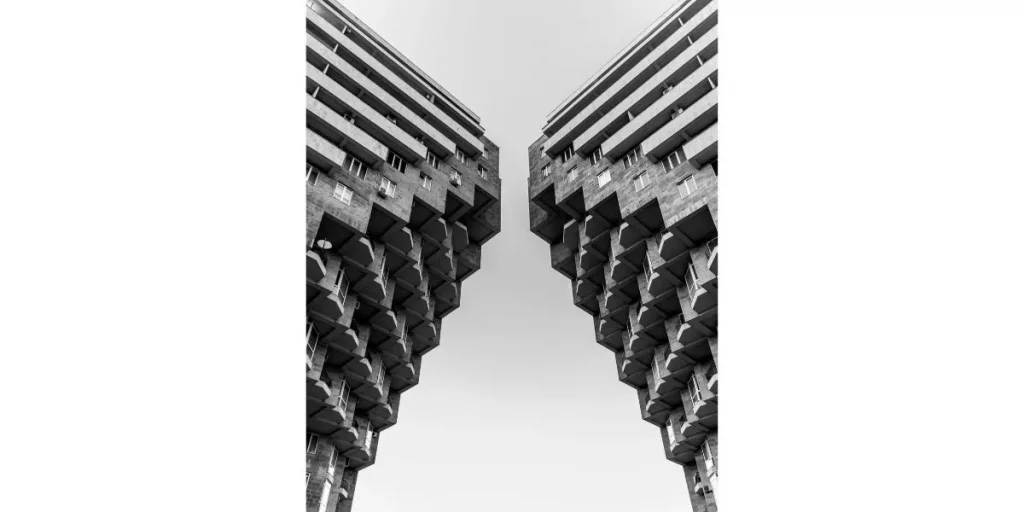
Housing architecture and Soviet design
At the same time, during the Soviet rule, significant changes were noticeable not only in broader urban planning but also in neighborhood design in Armenia. Beautiful 2-3 story buildings with backyard balconies, which would otherwise be quite typical for the Caucasus region, were of course gone. Standardized apartment blocks were quickly built all around the country to support mass migration into urban areas. Cheap mass housing was desperately needed. As a result, today almost all residential blocks built in that era look alike.
Today, after the collapse of the Soviet Union, public sentiments toward Soviet architecture are different. Some see these buildings as symbols of an oppressive regime, while others consider them valuable pieces of the country’s history. While modernism is taking place everywhere, including in the architectural preferences of people, mass protests were observed with demands to preserve some of the old buildings that different municipalities were planning to demolish.
If you ask me, I think public buildings and those of significant cultural meaning should be preserved. The Soviet past is something we have to reconcile with, and it’s part of our history that we shouldn’t forget. At least to remember what happens when we let somebody take away our freedom and sovereignty as a nation. At the same time, I’d be very happy if those ugly Soviet apartment blocks were replaced with more modern and livable spaces. A city like Yerevan really doesn’t need 9-15 story apartment blocks with no character.

Why can’t you see the facades of buildings in Armenia?
One very interesting fact about Soviet block flat architecture in Armenia is that facades are largely hidden. Hear me out! If you step into almost any residential area, even from the backyard sides of buildings in the city center, you will hardly see the original facades of the buildings. This is because in Armenia it’s very common for people would extend their living space by adding extra construction on the side of the existing building, expanding their apartment area in that way.
This approach was booming in the 1990s and early 2000s, as the government had a very relaxed attitude to this kind of uncontrolled construction. People needed to create more space for newly forming families of their children who would enter adulthood and get married. At the same time, housing wasn’t affordable for young families, so people were just adding rooms to their existing flats by extending the area beyond the original facade of the building.
In many cases, the neighbors on the ground floor would do that first, and then neighbors above would build their own extension on top of it. In some cases, people living on the upper floors would decide to not wait for their neighbors from below to take action. So, they’d put large pillars into the ground and simply build their extension on the 2nd or 3rd floor on those pillars. It’s bizarre, of course, and it’s against any kind of safety regulations. So recently the government started fighting against such illegal extensions.
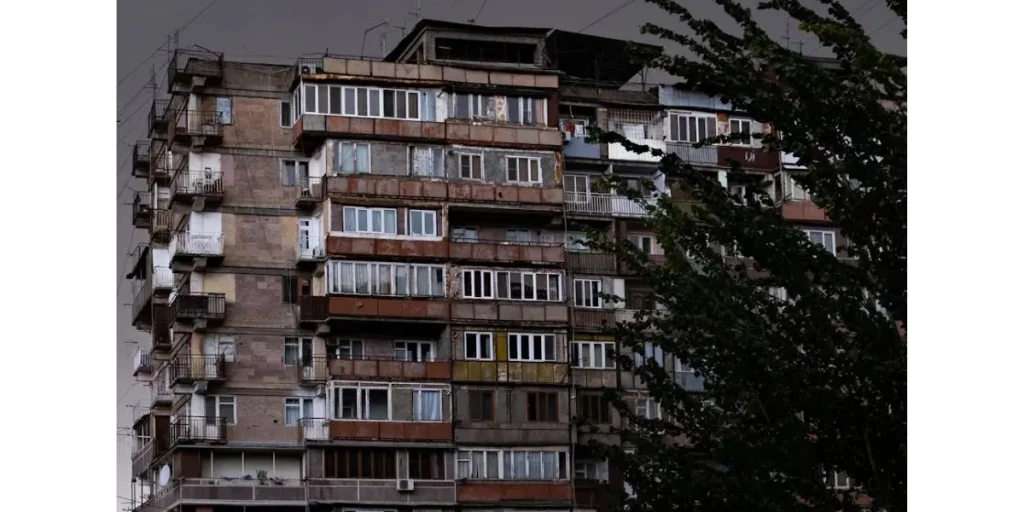
Traditional Armenian motifs in Soviet architecture
While Soviet architecture left its definite mark on modern-day Armenia’s architecture by making it somewhat similar to that of all other countries under the Soviet regime, we see some changes starting after the death of Stalin. At the end of the 1950s, we started noticing more and more national motifs used in newly built buildings. It almost feels like the regime had loosened its grip a little bit, allowing a bit more of self-expression for the individual nations under Soviet rule.
Some examples of elements of rather traditional Armenian architecture that started appearing on our buildings in Armenia are pointed arches, ornate carvings, and different decorative motifs. While before the only imaginable decorations on the buildings would be some mosaics and other visualizations of ideas pushed by Soviet propaganda, now it seemed to be okay to simply decorate the building for its aesthetic only. Such elements started appearing on major cultural and public buildings more prominently in the 60s and 70s. An example is Cascade, of which I’ll talk a bit more in detail below. It blends modern and traditional influences in a very fascinating manner, so it’s worth our attention.
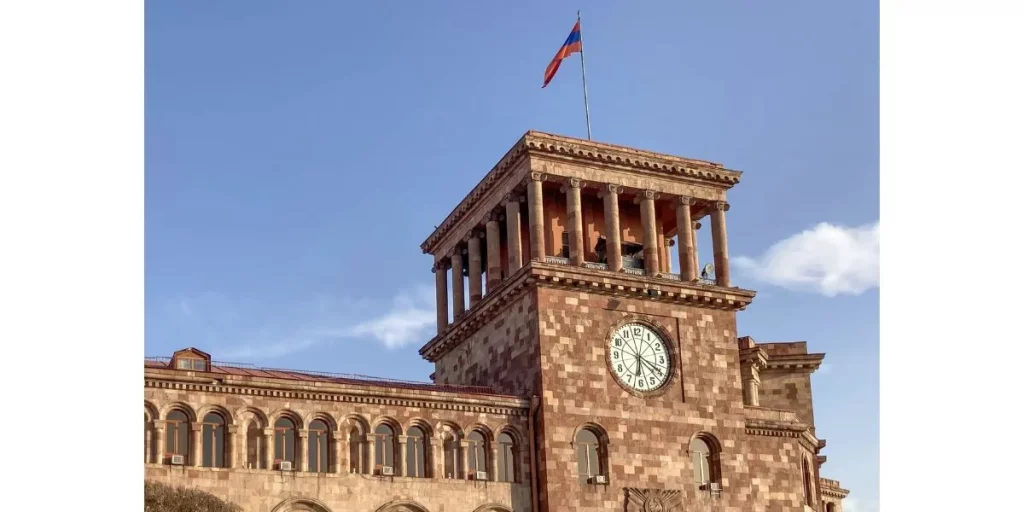
Soviet architecture examples in Armenia
Cascade
Located in the heart of Yerevan, Cascade is a giant stairway made of limestone. It’s a good example of what Soviet architecture made possible in Armenia. It was originally conceived by the architect Alexander Tamanyan who wanted to connect the northern and central parts of Yerevan. But Tamanyan was not the architect of Cascade. It was only in the late 1970s that the plan came into realization. The architect of Cascade was Yerevan’s Chief Architect Jim Torosyan who included Tamanyan’s original plan but incorporated an exterior stairway in the project.
Today Cascade is the house for Cafesjian Center for the Arts. Cafesjian was an American-Armenian benefactor who had a large collection of art and expensive interior design pieces. In the early 2000s, the complex underwent a major renovation under his supervision. Inside there is the gallery, outside there are the stairs that people can take to go up to the northern part of Yerevan. But many people prefer to just sit on the cascade stairs in the evening, enjoying the sunset and observing the stunning view of Mount Ararat.
Also, today, the area around Cascade is a host of many cafes and restaurants. The little scare in front of the Cascade is embellished with numerous sculptures and installations of world-renowned artists like Fernando Botero or Barry Flanagan. It’s not surprising that this is one of the favorite spots for locals and visitors.
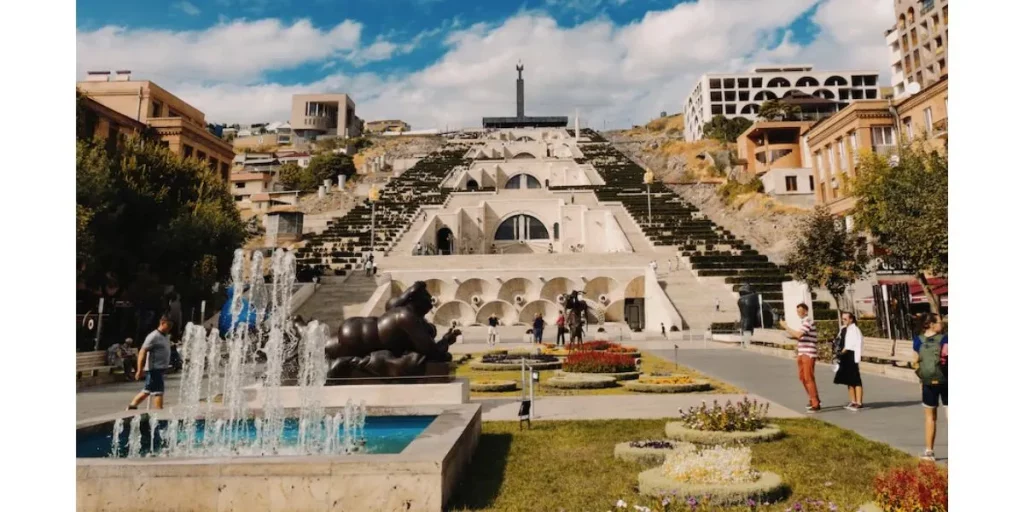
Cinema Rossiya
Cinema Rossiya is another great example of a prominent Soviet architecture piece in Armenia. It was built between 1968 and 1975. The architects were Spartak Khachikyan, Hrachik Poghosyan, and Artur Tarkhanyan. It was the largest cinema in Armenia, also known as Soviet Rossiya and Airarat. In fact, the lower and higher parts of the building resemble Mount Ararat, as it appears to people when we look at it from Armenia’s side.
After the Soviet Union collapsed, the building was abandoned for some time. In 1992, commercial tents were set up here. Today, Cinema Rossiya is a shopping center. It’s sad to admit that, to be honest. But to me, it seems like this was one of the examples of Soviet architecture that should have been protected and preserved. I’d rather it serve a public good in one way or another than be a simple commercial project.

Komitas Chamber Music Theater
Komitas Chamber Music Theater is a Soviet-era concert hall in the heart of Yerevan. It is named after Armenian composer Komitas who went through the Ottoman Genocide and ended up in an asylum center as his mental health was destroyed by the atrocities he’s seen. The Music center was designed by artist Stepan Kyukchyan and constructed by engineer Eduard Khzmalyan.
The first concert in the theater was held in 1977. The building pertains to an Armenian three-nave basilica-type church. Its extraordinary design incorporates no visible limits between the stage and the seats. This is why I strongly recommend checking this theater out for its architecture, not only in the sense of the exteriors of the building but particularly seeing it inside. As a home for traditional chamber music, Komitas Chamber Hall hosts many musicians locally and internationally. So, you might even catch an impressive concert here.
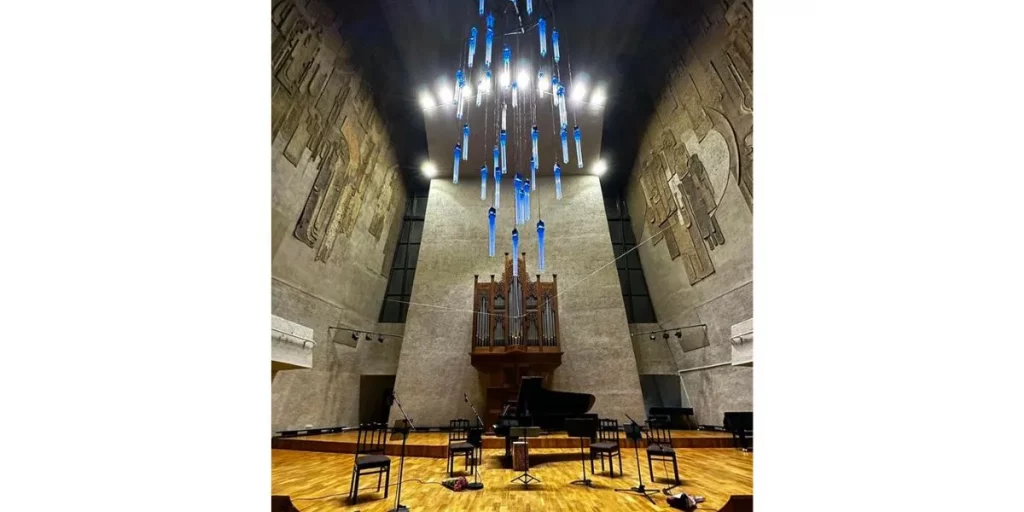
Metro station Yeritasardakan
Metro station Yeritasardakan is one of the view metro stations built in Yerevan that deserves your attention if you’re looking to explore Soviet architecture in Armenia. It opened its doors to thousands of visitors in 1981. The word “yeritasardakan” is translated as “for the youth”. This is perhaps because the metro station is close to so many universities and naturally the area is packed with students.
The above-ground cylindrical section of the station is inclined at an angle that allows light onto the passenger escalators below. The station, especially from the outside, has a very peculiar look. It certainly stands out as a reminder of Armenia’s Soviet past.
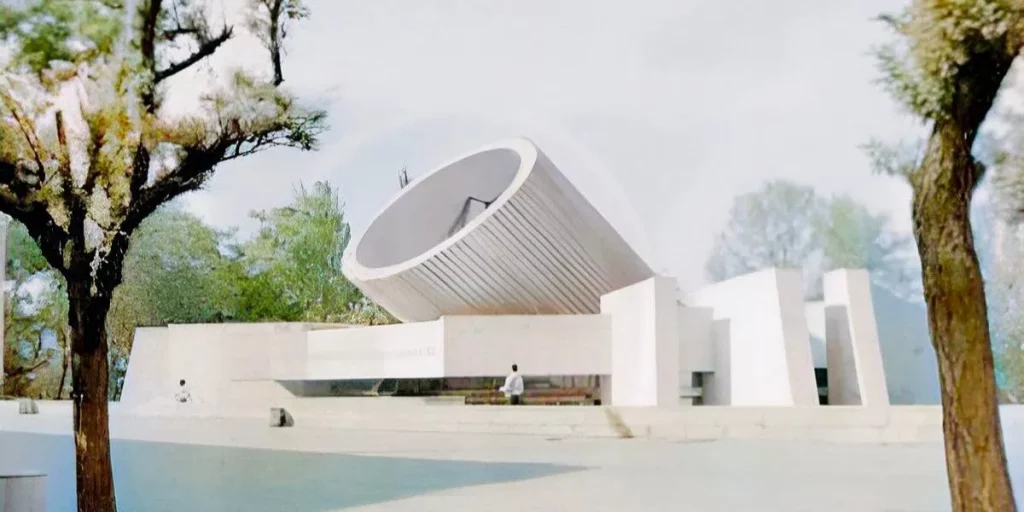
Tigran Petrosian Chess House
Armenians are known to be good chess players but the name of Tigran Petrosyan stands out. He earned the title of World Chess Champion twice in a row in 1963 and in 1969. Petrosyan is known for his defensive skills and strategic acumen. He could foresee the opponent’s moves and meticulously plan his responses. So, it’s not surprising that we have a prominent building in the Yerevan city center named after him.
The Tigrant Petrosyan Chess House is not just a building. Since 1972, it has hosted the Yerevan Chess School. For many years this was a place where Armenian children would come to aspire for a great career and better life. After all, being a strong chess player is very well regarded in Armenian society. We even have chess classes in our school system, and they are a mandatory part of the curriculum.
Here adults and children play chess, practice, get inspired, and preserve chess history. The building was opened in 1970 and in 1984 it was named after Tigran Petrosian. It was Tigran Petrosyan himself who laid the first stone in the foundation of the building. Soviet architect, Zhanna Meshcheryakova, decorated the building with large chess symbols on the side. Overall, it looks pretty interesting, and I recommend checking it out if you are interested in Soviet architecture. I just wish they got rid of the ugly parking space in front of that building.

Mother Armenia and Victory Park
In the heart of Yerevan stands a towering monument that signifies the nation’s resilience and triumph over adversity – Mother Armenia. It’s an awe-inspiring statue overlooking Victory Park, a large green area with statues dedicated to the victory of the Soviet army in WW2.
Mother Armenia stands 22 meters (72ft) tall but with the pedestal, it is 51 meters (167ft). It is built of hammered copper and the pedestal is of basalt. There used to be Joseph Stalin’s statue at the place of Mother Armenia. In 1962, the sculpture of Stalin was dismantled and in 1967 Mother Armenia was installed. The sculptor was Ara Harutyunyan. In 1970, a museum to WW2 was opened at the base of the monument.
The statue’s depiction of a confident, armor-clad woman cradling a sword and a shield is a symbol of Armenian women who provide strength and protection to their families and the homeland. Up to today, Armenian women continue to be pillars of strength within society.
Visiting Mother Armenia and Victory Park is an emotional experience. It evokes a sense of respect for the Armenian women who stood strong during wartime while the panoramic view from Victory Park’s hilltop amazes the visitors with the look to Mount Ararat.
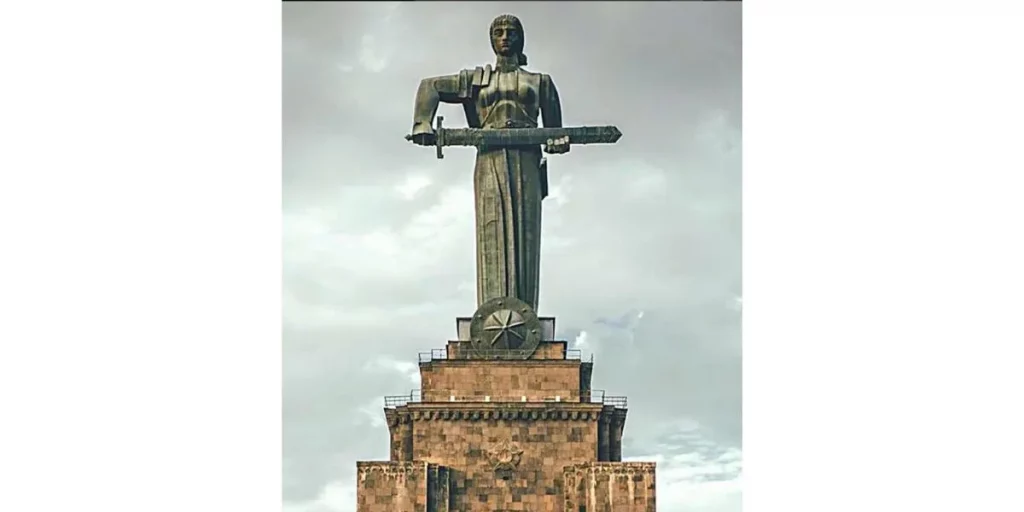
Wrapping up
Exploring Soviet architecture in Armenia is not just an architectural journey. It is a journey through ideology and time. It is a reflection of unique beauty that serves as a testament that architecture can shape not only the physical landscape but also the collective memory. While I am not from the Soviet generation, I do know that a lot of people are nostalgic about the time, and any intrusion into the Soviet architectural realm is taken seriously in Armenia.
This does not mean Armenia did not add to its architectural landscape after the fall of the Soviet Union. Explore my blog on 5 gems of modern Armenian architecture if you want to learn more about our architectural journey post-1991. And Armenia has a lot more to offer in terms of history. Here is a blog post on historical sites in Armenia that I think you might like. And as always, if you have something to add, don’t hesitate to ping me on Twitter or Instagram with #ArmeniaTravelTips.
Featured image: Photo by Rafael Ishkhanyan on Unsplash (edited)
